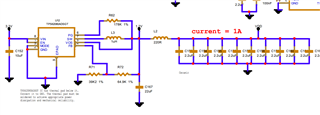Other Parts Discussed in Thread: TPS62080
Sir/Madam,
We have built a TMS320F28379D customized board and we succeeded basic testing like led blinking etc. As soon I power the the board, the F28379D IC gets hot. We followed all the guidelines mentioned in the datasheet like powerpad connecting to the ground.
I never have observed temperature of this magnitude when working on F28379D launchpad.
Regards,
Rajesh BN.


